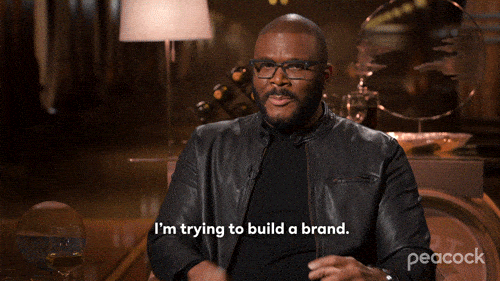- Startup Stoic
- Posts
- How to Build a Strong Brand Identity from Scratch – Lessons from top startups
How to Build a Strong Brand Identity from Scratch – Lessons from top startups
Building a Brand from Day One
When we hear the word brand, we often think of colors, logos, and catchy taglines. But strong brand identity goes much deeper. It’s the way people feel when they interact with your business. It’s how you stand out in a crowded marketplace. And for startups, nailing this early can shape the entire growth trajectory.
From Airbnb’s simple and warm logo to Notion’s monochromatic minimalist vibe, top startups understand that brand identity isn’t about being loud — it’s about being consistent, clear, and memorable.
So, how do you go from a nameless idea to a brand people trust? Let’s break it down.
Safeguard your margins from coupon leaks
Guess what Honey, CapitalOne Shopping, and RetailMeNot do to your margins? They crush them by leaking coupons and often claiming unwarranted affiliate commissions.
That’s why brands like Quince, Blueland, and Vessi use KeepCart to stop coupon abuse and reclaim lost revenue.
With KeepCart, you can:
Protect your checkout from more extensions than any other tool.
Get instant alerts when your code leaks—and identify the source.
Block customers from creating multiple accounts to exploit referral programs, discounts, and more.
It’s easy to install and saves your team time by automating coupon monitoring.
After months of using KeepCart, Mando says “It has paid for itself multiple times over.”
Now it’s your turn to see how much more profit you can keep.
1. Start With a Clear Purpose
Your brand identity begins with your “why.”
Why does your startup exist? What problem are you solving? What values do you stand for?
Take Warby Parker, for instance. Their mission wasn’t just to sell glasses — it was to make stylish, affordable eyewear accessible and to build a business that gives back. That mission has shaped everything from their tone to their community involvement.
Tip: Define a purpose that resonates emotionally. Your brand should reflect it at every touchpoint.
2. Know Your Audience Intimately
Before picking a color or font, understand who you’re speaking to.
Is your target user a young remote worker? A busy parent? A Gen-Z creator?
Duolingo nailed this. They understood their audience wanted language learning to feel fun and gamified — not like a chore. Everything from the app’s quirky mascot to its tone on social media reinforces this playful identity.
Tip: Build user personas. Tailor your messaging, design, and tone to match their expectations and desires.
3. Craft a Unique Voice and Tone
Your voice is your personality. It’s how your startup “talks” across your website, emails, customer support, and social media.
Mailchimp has built a brand that’s friendly, helpful, and just a bit cheeky — and it’s consistent from the homepage to help docs.

Mailchimp
Tip: Write a voice and tone guide. Define how you want to sound (e.g., casual, authoritative, witty) and stick to it.
4. Design a Visual System That Scales
This is where your logo, typography, colors, and layouts come in. Your visual identity should be flexible yet consistent — it should look good on an app icon, a billboard, and an Instagram post.
Notion’s minimal design appeals to modern knowledge workers. Their visuals reflect calm, order, and productivity — the exact emotions their users seek.
Tip: Invest in a brand style guide. Include logo usage, color palettes, typography, and image guidelines.
5. Consistency Builds Trust
One of the biggest lessons from top startups is the power of consistency. Whether a user is reading your blog, using your product, or opening your newsletter, they should feel the same core experience.
Figma, for example, built a design tool — and ensured their own brand design was impeccable. Their brand identity reinforces their promise: “Design for everyone.”
Tip: Audit your brand touchpoints regularly to ensure everything — from tone to visuals — aligns with your identity.

Gif by peacock on Giphy
Key Insights
A strong brand identity doesn’t require a huge budget, but it does require intentionality. Startups that win hearts early understand that branding isn’t a cosmetic layer — it’s core to how they build trust, community, and long-term value.
So whether you're still in stealth mode or preparing your Series A pitch, now is the time to ask: Does my brand say what I stand for?
Startup News and Updates
Here are some interesting startup updates from recent days;
A two-person geo-engineering startup being targeted by the Trump EPA for "polluting the air." Link
OpenAI sought to acquire Cursor before negotiating a $3 billion deal to acquire Windsurf. Link
Defence technology Through a tweet, Theseus was able to secure Y Combinator, the US Special Forces, and $4.3 million. Link
Here’s to building world class brands
–Team Startup Stoic

